Celtic Art Meanings, Styles, and Symbolism
Tattoos are more than just body art, they are stories inked into the skin, personal expressions of identity, belief, and heritage. One of the most iconic and enduring styles in tattoo culture is Celtic art. Rooted in ancient history and mythology, Celtic designs are known for their complexity, beauty, and deep symbolic meanings. From intricate knotwork to powerful symbols like the Celtic cross and the tree of life, these designs evoke a connection to spirituality, nature, and eternal truths.
If you’re considering getting a Celtic tattoo, you’re tapping into a tradition that goes back thousands of years. This article will delve deep into the history of Celtic art, explore the symbolism behind popular designs, and guide you in choosing the right tattoo for your personal journey.
Take a look at my celtic tattoo gallery here.
1. What is Celtic Art?
Celtic art traces its origins back to the ancient Celtic people who lived across Europe, particularly in regions like Ireland, Scotland, and Wales. The Celts were known for their highly symbolic and ornate designs that decorated everything from jewelry and manuscripts to weapons and stone carvings. Their art was influenced by a deep reverence for nature, the cycles of life, and a belief in the mystical and spiritual realms.
Origins and History of Celtic Art and Tattoos
The roots of Celtic art date back to the Iron Age, around 1000 BCE. During this time, the Celts developed a unique artistic style characterized by swirling patterns, spirals, and knotwork that has persisted for millennia. Although the Celts never formed a unified empire, their cultural influence spread widely, thanks to their expansive trade networks and migrations.
Much of what we know about Celtic art comes from archaeological findings, illuminated manuscripts such as the Book of Kells, and historical texts from Roman sources. The artwork was often used to honor deities, depict mythological creatures, and express complex philosophical ideas. It reflected their view of the universe as interconnected and cyclical—an endless loop of life, death, and rebirth, symbolized by their renowned knotwork.
Common Themes in Celtic Art
Celtic art frequently draws on nature and mythology, blending the human, animal, and spiritual worlds. The most recognizable elements include:
• Knotwork: Intricate, interwoven lines that symbolize eternity and the interconnectedness of all things.
• Spirals: Representing cycles of life, death, and rebirth.
• Crosses: Fusing Christian and pagan beliefs, especially in designs like the Celtic Cross.
• Animals: Horses, wolves, birds, and other animals were often used to convey different strengths and qualities.
• Celestial Symbols: The sun, moon, and stars played significant roles in Celtic spirituality and art.
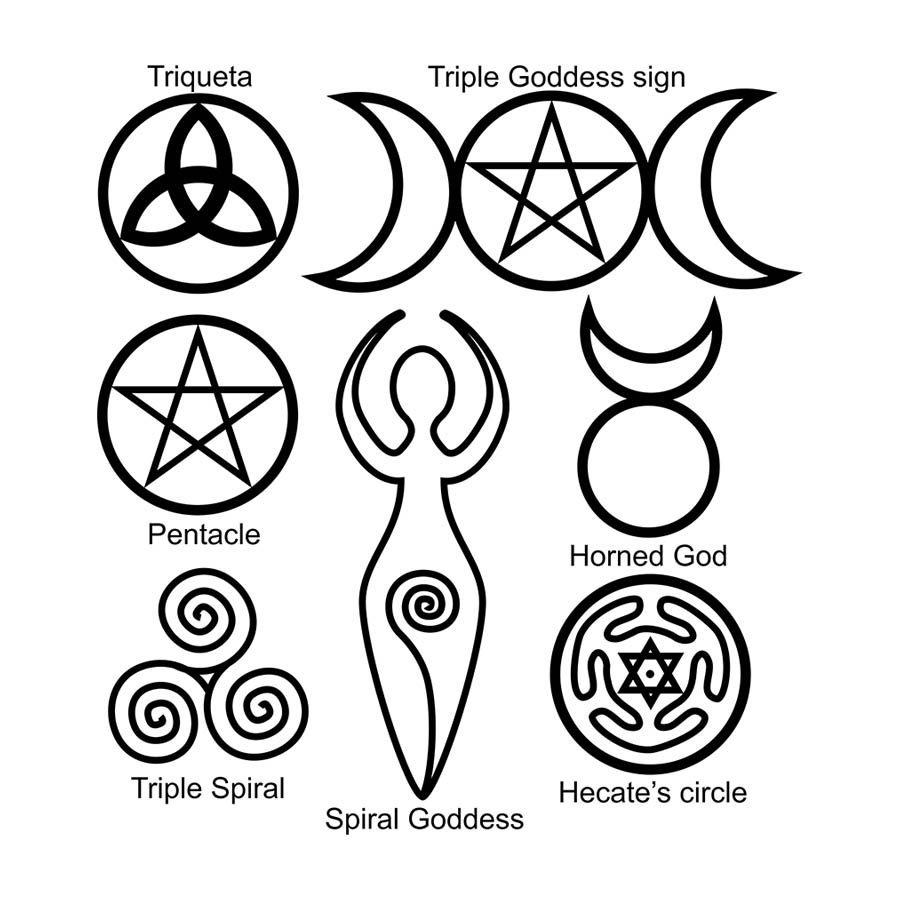
2. The Symbolism Behind Popular Celtic Designs
Celtic art is rich with symbolism. Each design carries with it layers of meaning, allowing people to choose a tattoo that resonates with their personal beliefs, values, and life experiences. Here are some of the most popular Celtic designs and their meanings:
Celtic Knots
One of the most enduring symbols in Celtic art is the knot. These interwoven lines, which have no beginning or end, are often seen as representations of eternity—whether it be eternal life, love, or faith. The endless loops are thought to symbolize the interconnectedness of life, as well as the cycles of nature, from birth to death to rebirth.
Popular Knot Designs:
• Triquetra (Trinity Knot): This is one of the most iconic Celtic symbols. Its three interlocking loops are often interpreted as representations of the Holy Trinity (Father, Son, and Holy Spirit), but in a more secular context, they can also represent life’s natural forces: earth, air, and water, or the cycle of life: birth, death, and rebirth.
• Spiral Knots: These designs feature spiraling lines that symbolize the journey of life and the passage of time.
• Lover’s Knot: Two interwoven hearts, representing the eternal bond between two people, often chosen for couple’s tattoos or as a symbol of lasting love.
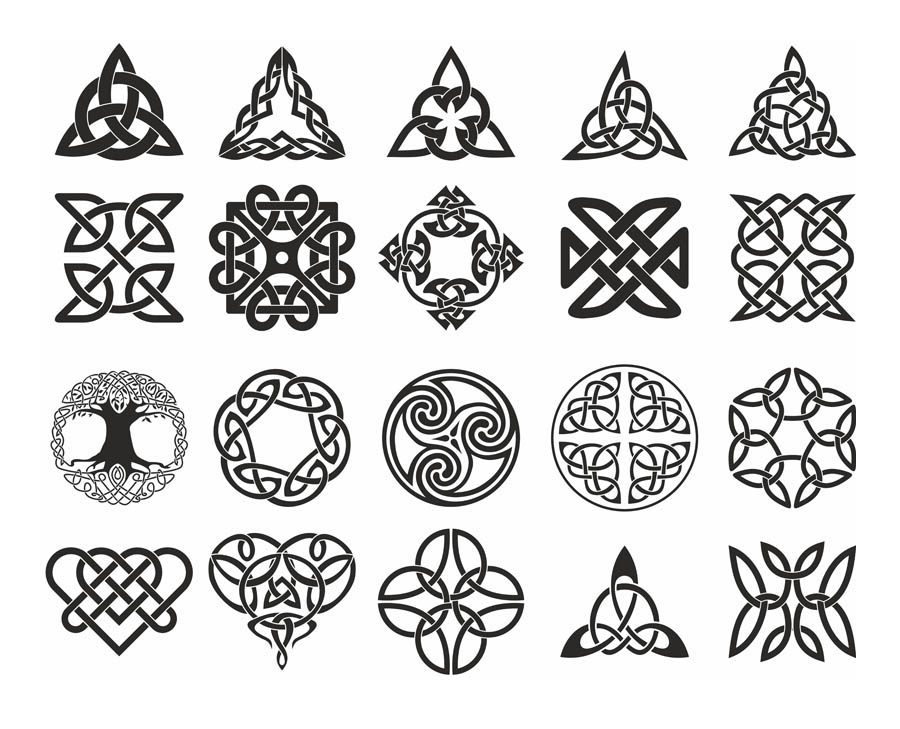
Celtic Cross
Another powerful symbol in Celtic art is the Celtic Cross, a design that fuses both pagan and Christian symbolism. It typically features a traditional cross with a circular ring around the intersection, representing eternal life and the endless nature of God’s love. Some interpretations suggest that the circle represents the sun, which was a powerful symbol in early Celtic spirituality, while the cross symbolizes the unity of the spiritual and earthly realms.
For many people, the Celtic Cross is more than just a religious symbol—it represents faith, unity, balance, and protection. The design is deeply meaningful for those with Celtic ancestry or spiritual beliefs that connect with both pagan and Christian ideologies.
Variations of the Celtic Cross:
• High Cross: A more ornate and decorative version of the Celtic Cross, often seen on ancient stone monuments in Ireland and Scotland. These crosses are typically carved with intricate knotwork and sometimes feature biblical or mythological scenes.
• Simplified Cross: A minimalist version, often used in tattoos for its clean lines and elegant symbolism. It still retains the circular halo, which represents the eternal and unbroken cycle of life.
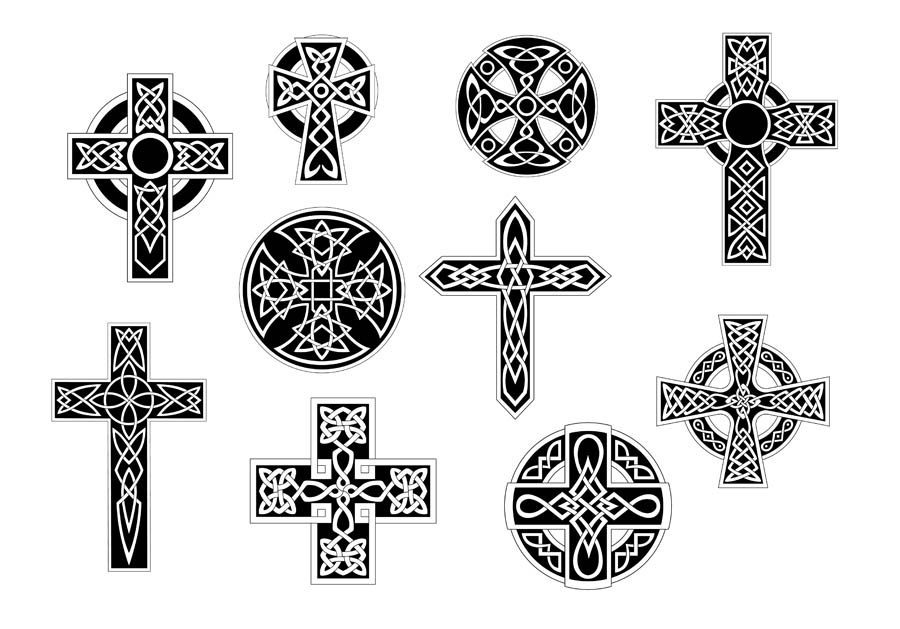
Tree of Life (Crann Bethadh)
The Tree of Life, or Crann Bethadh in Gaelic, is another powerful symbol in Celtic art. It represents harmony, balance, and the connection between the heavens, earth, and the underworld. In Celtic belief, trees were sacred and considered the dwelling places of gods and spirits. The roots of the tree reach deep into the earth, while the branches stretch toward the sky, symbolizing the connection between the material and spiritual worlds.
The Tree of Life also symbolizes rebirth and renewal, as trees lose their leaves in the winter and grow new ones in the spring. Many people choose this symbol for its meaning of strength, growth, and a deep connection to nature and ancestry.
Triskelion (Triple Spiral)
The Triskelion, also known as the Triple Spiral, is another popular Celtic tattoo design with deep symbolic roots. This motif features three interlocking spirals and is often interpreted as a representation of life’s cycles: birth, death, and rebirth. The number three is a sacred number in many cultures, including the Celts, and the Triskelion symbolizes forward motion and progress.
In addition to its connection to life cycles, the Triskelion also represents balance between the mind, body, and spirit. This symbol is perfect for those seeking personal growth, resilience, and transformation in their life.
Animals in Celtic Art
Animals played a significant role in Celtic culture, and many are considered totems that convey specific strengths, qualities, and traits. Celtic animal tattoos can be powerful symbols of protection, strength, and wisdom. Each animal has its own unique meaning:
• Horse: The horse is a symbol of power, nobility, and freedom. In Celtic mythology, horses were often associated with the goddess Epona, a protector of horses, fertility, and life.
• Wolf: Wolves are symbols of strength, loyalty, and protection. They are often depicted in Celtic art as guardians or spiritual guides.
• Raven: Associated with prophecy and transformation, the raven was often seen as a symbol of change, especially in times of conflict.
• Stag: The stag represents the forest, nature, and regeneration. It is a symbol of leadership and strength.
These animals can be incorporated into a Celtic design or featured alone to convey specific meanings that resonate with the individual.
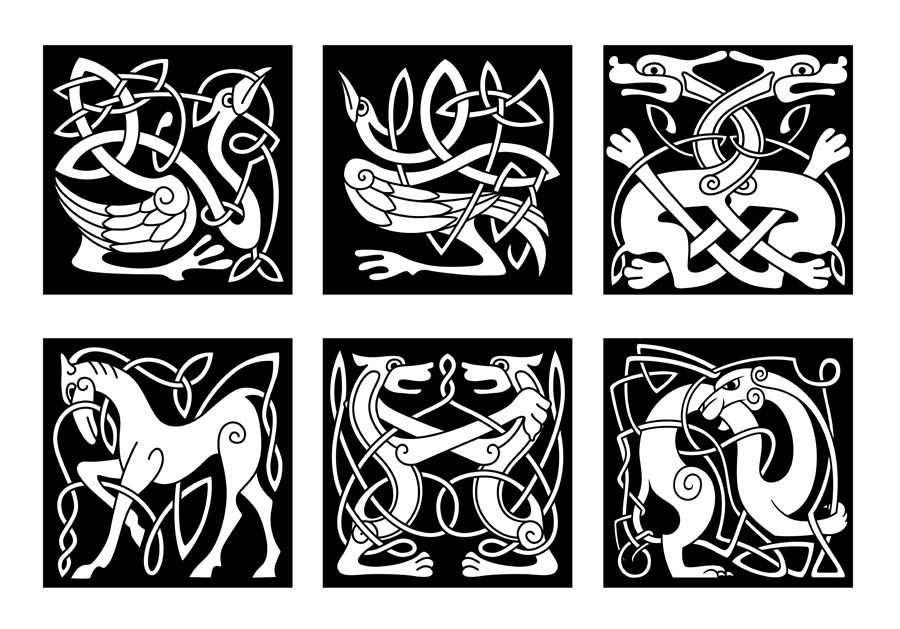
3. How to Choose the Right Celtic Design for Your Tattoo
Choosing the right Celtic tattoo design involves more than just picking something that looks visually appealing. Each symbol carries a specific meaning and significance, and it’s important to align the design with your personal journey, beliefs, or values. Here’s how to navigate the process:
Understanding Personal Symbolism
Think about your personal story and what you want your tattoo to represent. Are you drawn to the symbolism of eternity, strength, protection, or something more spiritual? Many people choose Celtic designs to honor their heritage, while others are drawn to the spiritual or philosophical meanings behind the symbols.
• If you’re seeking protection or guidance, animal symbols like the wolf or raven might resonate with you.
• If you want to represent eternal love or connection, Celtic knots or the Lover’s Knot are perfect choices.
• If you’re on a journey of growth and transformation, consider the Tree of Life or the Triskelion for their powerful connections to rebirth and change.
Aesthetic Preferences
Celtic tattoos come in a variety of styles, from bold and intricate to simple and elegant. Some people prefer large, detailed designs that cover significant portions of the body, like the back or shoulder, while others may want something smaller and more minimalistic. Consider how detailed or simple you want your tattoo to be, as this can affect both the design and the time it takes to complete.
Placement Considerations:
• Wrist or forearm: Ideal for smaller designs like simple knotwork or small animal symbols.
• Upper arm or shoulder: Good for medium-sized designs, especially crosses or Tree of Life symbols.
• Back: A larger canvas for detailed designs like the High Celtic Cross or intricate knotwork that spans across the shoulders.
Blending Modern and Traditional Elements
While traditional Celtic tattoos are typically monochromatic, using black ink to highlight the intricate details of the design, modern tattoo artists are experimenting with new techniques and styles. Many people choose to blend the traditional with the contemporary, adding color, shading, or abstract elements to make the design truly unique. This could include adding vibrant green hues to emphasize the connection to nature, or using modern tattoo techniques like watercolor effects for a softer, more fluid look.
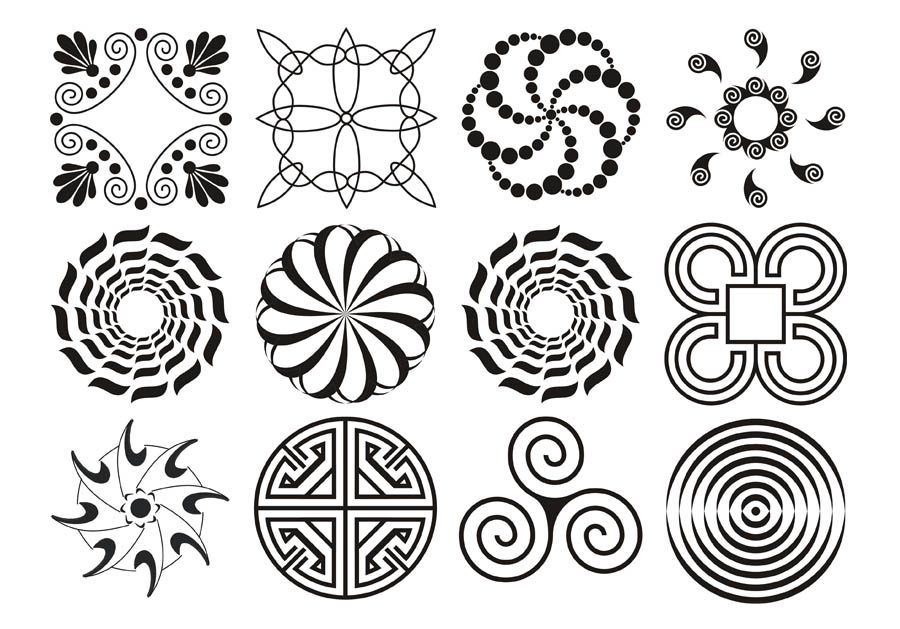
4. The Artistic Style of Celtic Tattoos
Celtic tattoos are known for their intricacy and deep symbolism, which means the style of the tattoo is just as important as the design itself. The complex nature of knotwork, spirals, and other motifs requires a skilled artist with a steady hand and an eye for detail.
Intricacy and Detail
Celtic tattoos, especially those featuring knotwork or the Tree of Life, can be extremely detailed. Each line is important, and the interwoven patterns need to be carefully planned and executed to maintain clarity over time. Some designs, like the High Celtic Cross or detailed animal symbols, require fine linework, making them ideal for larger areas where the intricacy can be fully appreciated.
Blackwork vs. Color
Traditional Celtic tattoos are often done in black ink, which is ideal for creating bold, clean lines that stand out on the skin. Blackwork emphasizes the intricate designs of Celtic knotwork and spirals, allowing the details to be sharp and defined.
However, some modern tattoo artists are experimenting with color, blending the traditional monochromatic style with vibrant hues. Colors like green, blue, and gold can be added to enhance the design’s connection to nature, spirituality, or mythology.
Geometric vs. Organic Flow
Celtic tattoos often balance geometric precision with organic flow. Knotwork, for example, is inherently geometric, with its structured, repetitive patterns. In contrast, designs like the Tree of Life or Celtic animals often have a more organic, flowing appearance, blending curves and natural shapes with the more rigid structure of knotwork.
Understanding this balance is key when deciding on a tattoo design. A purely geometric design might appeal to someone who prefers symmetry and structure, while an organic design could resonate with someone seeking a more fluid, natural aesthetic.
5. Finding the Right Tattoo Artist
One of the most important decisions when getting a Celtic tattoo is choosing the right artist. Not all tattoo artists specialize in intricate line work or traditional Celtic designs, so finding someone with the right experience is crucial.
Expertise in Celtic Art
A skilled Celtic tattoo artist will have experience working with detailed knotwork, spirals, and intricate symbols. It’s important to find an artist who understands the significance of the designs and can accurately reproduce the traditional elements while incorporating your personal vision.
Consultations and Customization
I have 20 years experience of working with celtic art, contact me to arrange a consultation to discuss your ideas. I will work with you to customize the design, ensuring that it reflects your personal story and the symbolism you want to convey. Don’t be afraid to ask for modifications to make the tattoo uniquely yours.
Portfolio Review
Always review the artist’s portfolio of celtic tattoos (you can see mine here) to get a sense of their style and experience with Celtic designs. Look for clean, sharp lines, well-executed knotwork, and attention to detail. A good portfolio will give you confidence in the artist’s ability to bring your vision to life.

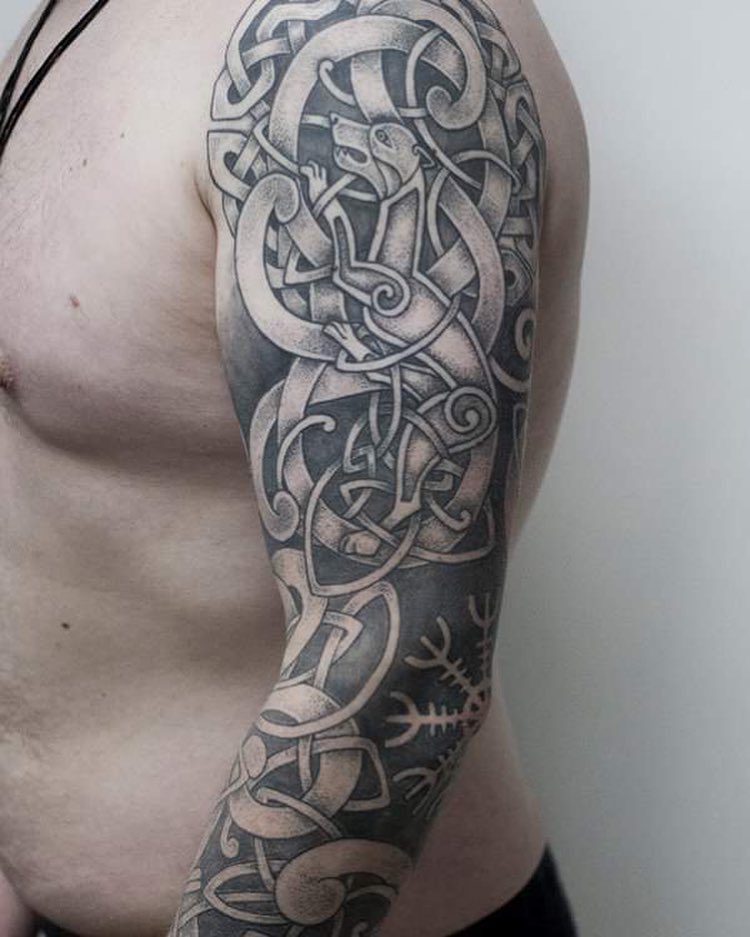
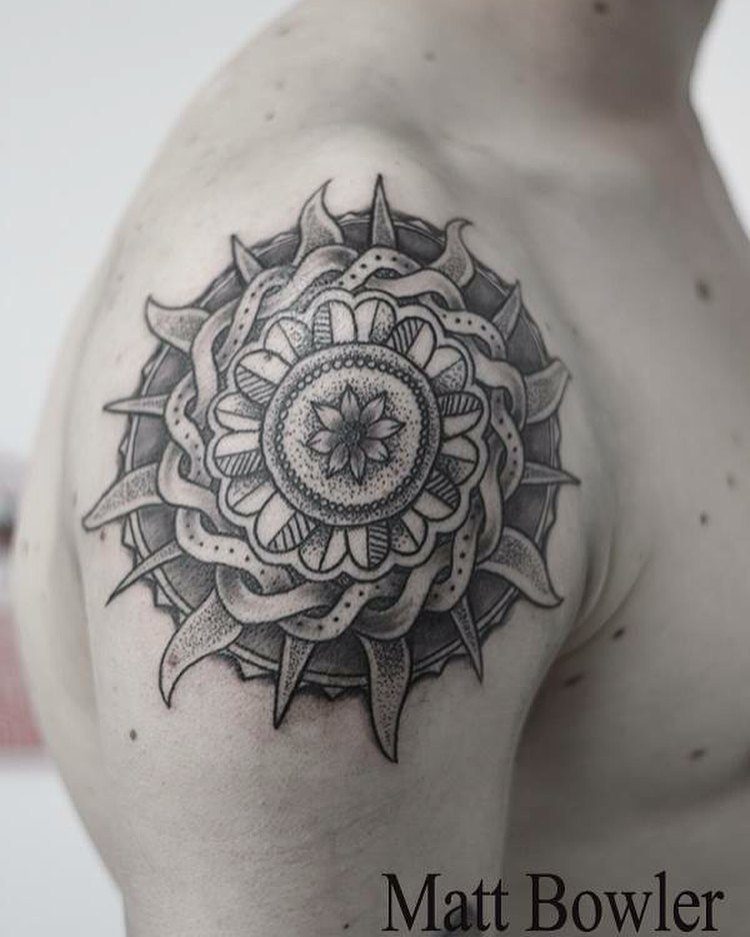

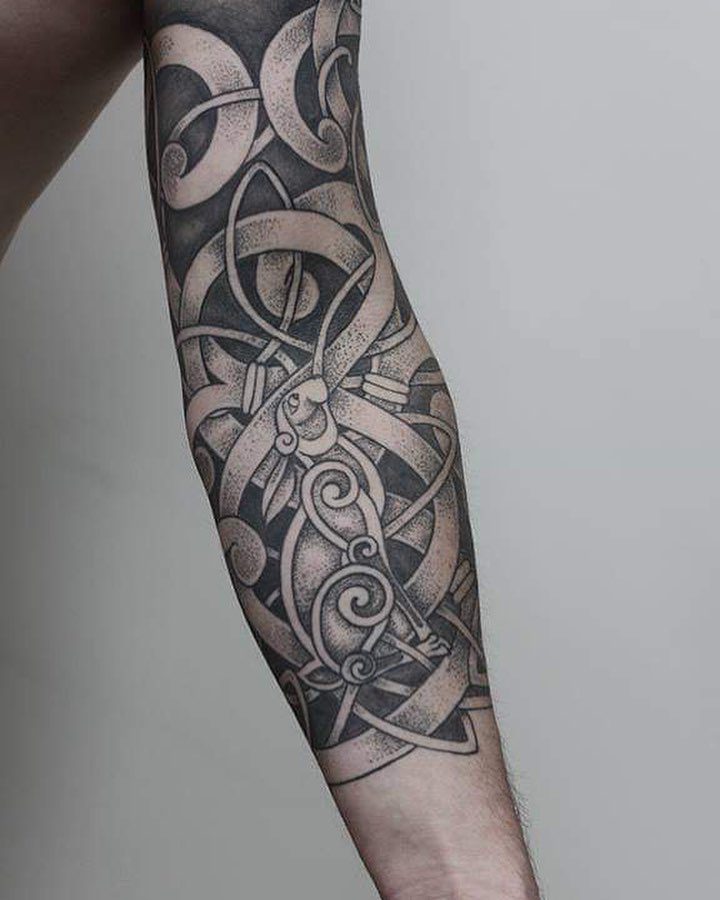
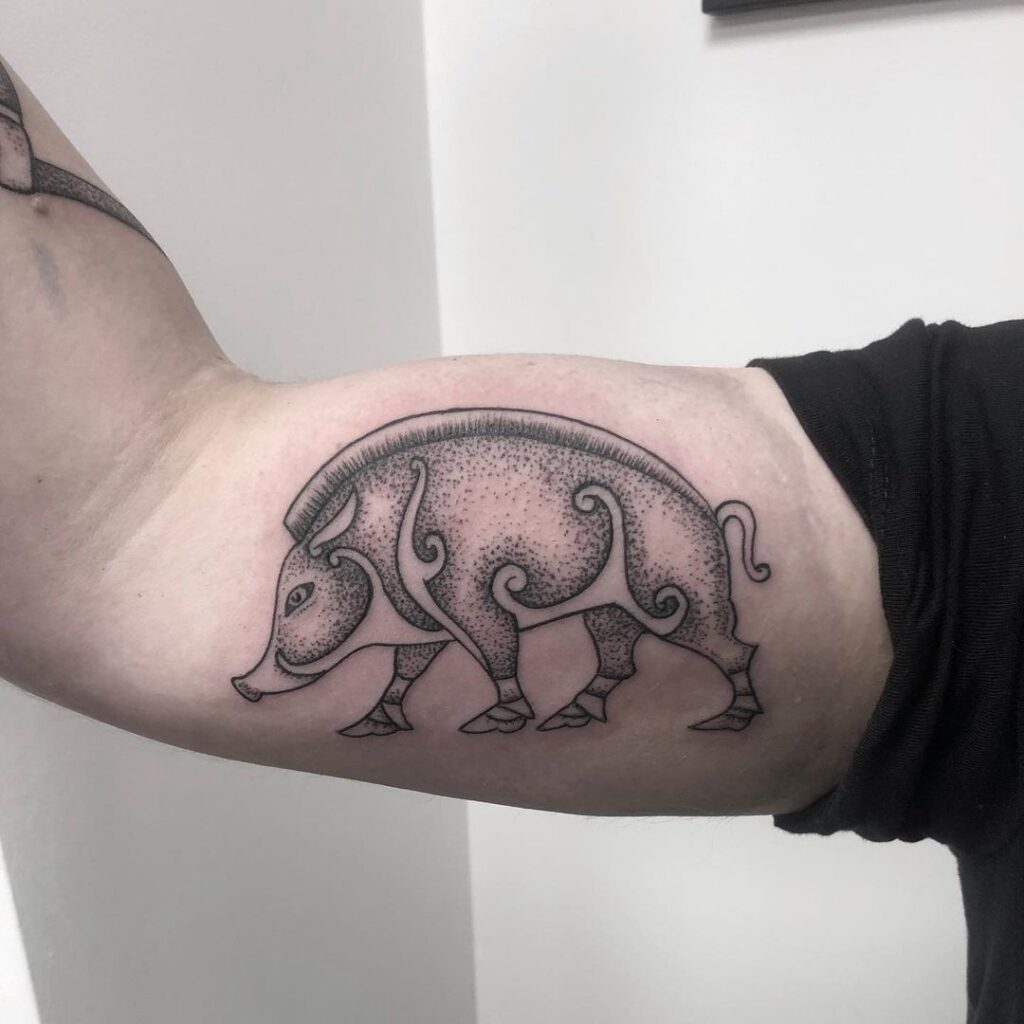
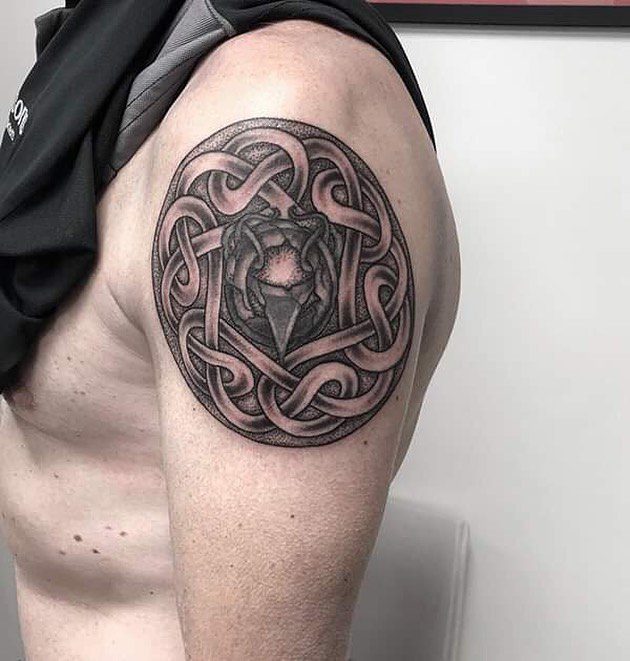
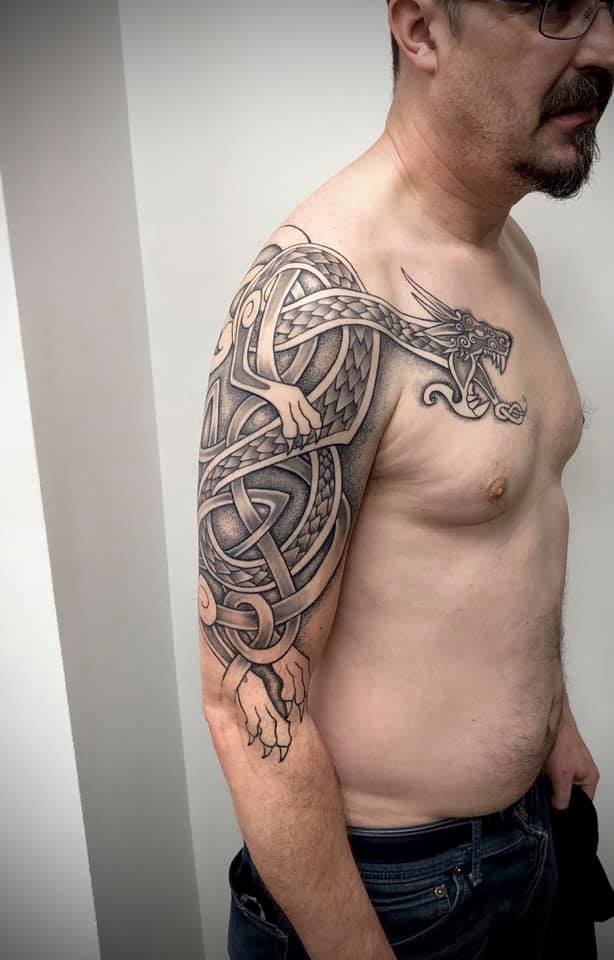
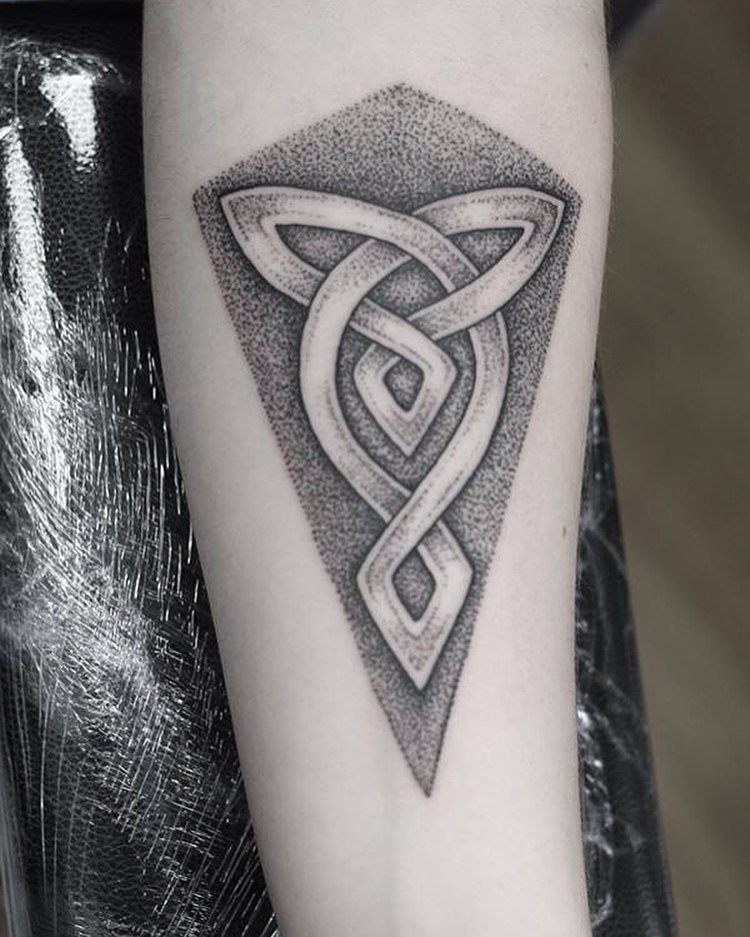
6. Respect for Celtic Heritage
When choosing a Celtic tattoo, it’s essential to appreciate the cultural and historical significance behind the designs. Celtic art is steeped in history and symbolism, and for many people, these designs are more than just aesthetic choices; they reflect a deep cultural heritage. Being mindful of this will help ensure that your tattoo is not only beautiful but also respectful of the traditions it represents.
Understanding the Cultural Roots
Celtic art dates back thousands of years, and it has roots in the religious, spiritual, and social practices of ancient Celtic societies. These designs often reflect core values like interconnectedness, eternity, and the natural world. The Celts had a profound connection to nature, and much of their symbolism revolves around the cycles of life, death, and rebirth. By understanding the cultural context of Celtic art, you can make a more informed decision about your tattoo and its meaning.
For example, the Celtic Cross blends pagan and Christian symbols, representing a spiritual unity that was important to early Celtic Christians. Similarly, Celtic knotwork is not just decorative; it represents the belief in the eternal nature of life and the universe. Knowing these deeper meanings can help you choose a design that resonates with you on a personal level while also honoring the tradition from which it comes.
Incorporating Authentic Elements
If you’re deeply drawn to Celtic designs, consider working with an artist to create an authentic and respectful representation. This could involve incorporating traditional elements like knotwork, spirals, or animals that align with your personal values. You can also combine these elements with other symbols that hold personal significance to you, creating a tattoo that honors both your individuality and the Celtic tradition.
For example:
• If you want a tattoo to symbolize protection, you might choose a design featuring a wolf or raven, both of which are considered powerful protective symbols in Celtic culture.
• If you’re drawn to the idea of eternal love or connection, a Celtic knot or the Lover’s Knot could be a beautiful choice, representing the unbreakable bonds between two people.
By incorporating authentic elements into your tattoo design, you can ensure that your tattoo is both meaningful to you and respectful of the culture it comes from.
7. Tattoo Aftercare for Celtic Designs
Once you’ve decided on your Celtic tattoo and had it inked, the next step is ensuring that it heals properly. Aftercare is especially important for intricate tattoos like Celtic designs because the fine linework can be susceptible to fading or blurring if not cared for correctly.
Protecting Intricate Linework
Celtic tattoos often feature intricate details, especially in knotwork and spirals. These designs rely on precise linework to maintain their beauty and clarity over time. To protect your tattoo during the healing process:
• Keep it Clean: Gently wash the tattoo with mild, fragrance-free soap and lukewarm water. Pat it dry with a clean, soft towel—never rub or scratch the area.
• Apply a Healing Ointment: Your tattoo artist will likely recommend an ointment to keep the tattoo moisturized. Use it sparingly, as applying too much can clog the pores and hinder the healing process.
• Avoid Sun Exposure: Sunlight can cause the ink to fade, especially in the first few weeks after getting the tattoo. Keep the area covered or apply sunscreen after it has healed.
• No Picking or Scratching: As the tattoo heals, it will scab and peel. It’s important not to pick at the scabs, as this can damage the design and cause fading or scarring.
Long-Term Maintenance
Once your Celtic tattoo has healed, there are steps you can take to maintain its vibrancy and clarity over time. Proper care will ensure that the intricate details of your design remain sharp and defined for years to come.
• Moisturize Regularly: Keeping the skin moisturized can help maintain the elasticity and overall health of your skin, which in turn preserves the quality of the tattoo.
• Use Sunscreen: Even after your tattoo has healed, sun exposure can cause the ink to fade. Regularly applying sunscreen to your tattoo, especially if it’s on a part of your body that gets a lot of sun (like your arms or legs), will help protect it from UV damage.
• Touch-Ups: Over time, even the best-cared-for tattoos may start to fade slightly, especially if the design includes fine details. You can visit your tattoo artist for a touch-up to refresh the ink and keep the design looking as sharp as the day you got it.
Ready to Get Started on Your New Celtic Tattoo Design?
Getting a Celtic tattoo is not just about choosing a design; it’s about connecting with a rich tradition of symbolism, art, and culture. Whether you’re drawn to the intricate beauty of Celtic knots, the spiritual significance of the Celtic Cross, or the natural symbolism of animals, a Celtic tattoo can be a powerful expression of your beliefs, heritage, or personal journey.
Remember, the most meaningful tattoos are those that resonate with your personal story while respecting the cultural heritage from which they come. Take your time to research the designs, find a skilled artist, and ensure that your tattoo reflects both your individuality and the timeless beauty of Celtic art.
Celtic Tattoo Frequently Asked Questions
1. What is the significance of Celtic knots in tattoos?
Celtic knots represent eternity, interconnectedness, and the cycle of life, as the loops have no beginning or end. They are popular in tattoos because they symbolize concepts like eternal love, spiritual unity, and life’s unbroken journey.
2. Can non-Celtic people get Celtic tattoos?
Yes, people from any background can get Celtic tattoos. However, it’s important to approach these designs with respect and understanding of their cultural and historical significance to avoid cultural appropriation.
3. What is the best body placement for a detailed Celtic tattoo?
Detailed Celtic tattoos, such as intricate knotwork or the Tree of Life, are best placed on larger areas of the body like the back, shoulder, or upper arm. This allows the design to be showcased fully and maintains the clarity of the intricate details.
4. What is the difference between a Celtic cross and a regular cross?
A Celtic cross includes a circular halo around the intersection of the cross, symbolizing eternity and spiritual unity. It often features intricate knotwork and is a blend of both pagan and Christian symbolism, whereas a regular cross is a simpler representation of Christianity.
5. How long does a Celtic tattoo take to heal, given the intricacy?
Celtic tattoos typically take around 2-3 weeks to heal for the surface layer, but the deeper layers of the skin can take up to 6 weeks. The intricate linework requires extra care during healing to ensure the details remain sharp.
I hope this article helped you understand the history, symbolism, and practical considerations of getting a Celtic tattoo. If you have any specific image requests for other sections, feel free to get in touch!
